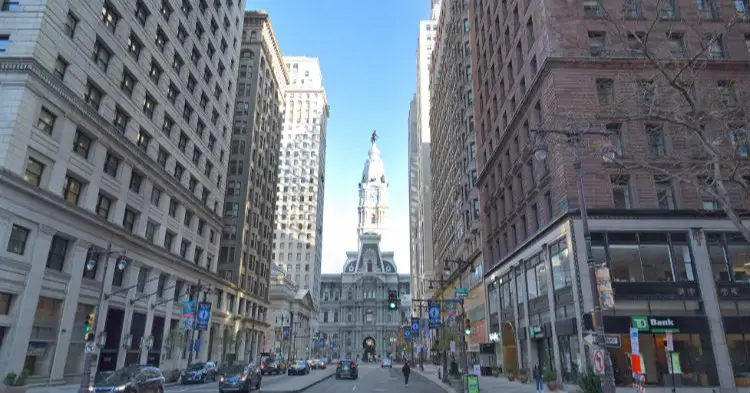Click To Call Us 24/7
This recap of the history of the city of Philadelphia is brought to you by the experienced worker’s comp lawyers in Philly from Schuster Law.
Philadelphia, colloquially known as Philly and often referred to as the city of brotherly love, is the sixth largest city in the US with regards to population. And while in the modern day the city is known for its recent NFL SuperBowl victory and its world class theaters, it is most commonly remembered as being an instrumental location for the Founding Fathers of this nation.
Read on as we cover some of the most important events in this venerable city’s past.
The Early History Of Philadelphia
The city was founded in 1682 by William Penn and was always intended to become the capital of Pennsylvania, which at the time was a colony. Established in the Delaware River, the city quickly became a bustling center for trading of goods.
Philly’s natural location in the heart of the early colonies made it an ideal meeting ground for revolutionaries of the time. Indeed, the First and Second Continental Congresses were held here. The Constitutional Convention of 1787, event which led to the writing of the Constitution of the USA, also took place in Independence Hall, a historic city in Old City Philadelphia.
At one point, Philly even served as the capital of the nation, though to the dismay of many of its citizens, this would soon be changed to two other cities before eventually settling on the modern location.
In the 1800s, the city become an industrious hub, though its biggest product were textiles. Later in the century, various railroad corporations would also call Philadelphia home.
During this century, the city was also influenced by large immigrant populations from Germany and Ireland. Their influence, along with that of the Italians, Russians, and eastern Europeans which came after them have helped make the city the cultural melting pot it is in the modern day.

Philly Of The 20th Century
In the early 1900s, Philly became the ground for violent and ethnically-fueled riots. It also became a hotbed for organized crime, mob activity, and police corruption during the Prohibition years.
Around the middle of the century, in the late ’50s, the city of Philadelphia faced bankruptcy due to a decline of industry and the immigration of its affluent community. Revitalization projects were put in place at the time and have proved successful though they have progressed slowly over the decades.
In the ’80s, the construction of a Center City skyline helped attract businesses back to Philadelphia. The combination of brand-new skyscrapers among the city’s oldest revolutionary-era structures makes for an enticing view, and one which attracts millions of tourists every year.
Philly’s coveted higher education institutions such as Drexel and Temple have also made the city a destination for ambitious learners, many of whom enter the medical field and have earned a great reputation for the hospitals of Philadelphia.
All in all, the Philadelphia of the modern day remains the evolving and dynamic hub that it has been for the past century and which makes it one of the most popular metropolitan cities of the USA.
Demographics Of Philadelphia
As of 2018, the city of Philly possesses a population of more than 1.5 million people and has been growing since 2007. Of these, 41% are Black, 41% are White, 13% are Hispanic, and 7% are Asian.
Philadelphia is known for having large Black American and Puerto Rican populations. The Asian population, which composes and important portion of the total population, possesses Chinese, Indian, Vietnamese, South Korean, and Philippine origins.
Schuster Law – Serving the Historic City of Philadelphia
We hope this short recap of this iconic American city has helped you understand why the worker’s comp lawyers in Philly of Schuster Law have decided to call it home and, in the process, become a part of history themselves.
